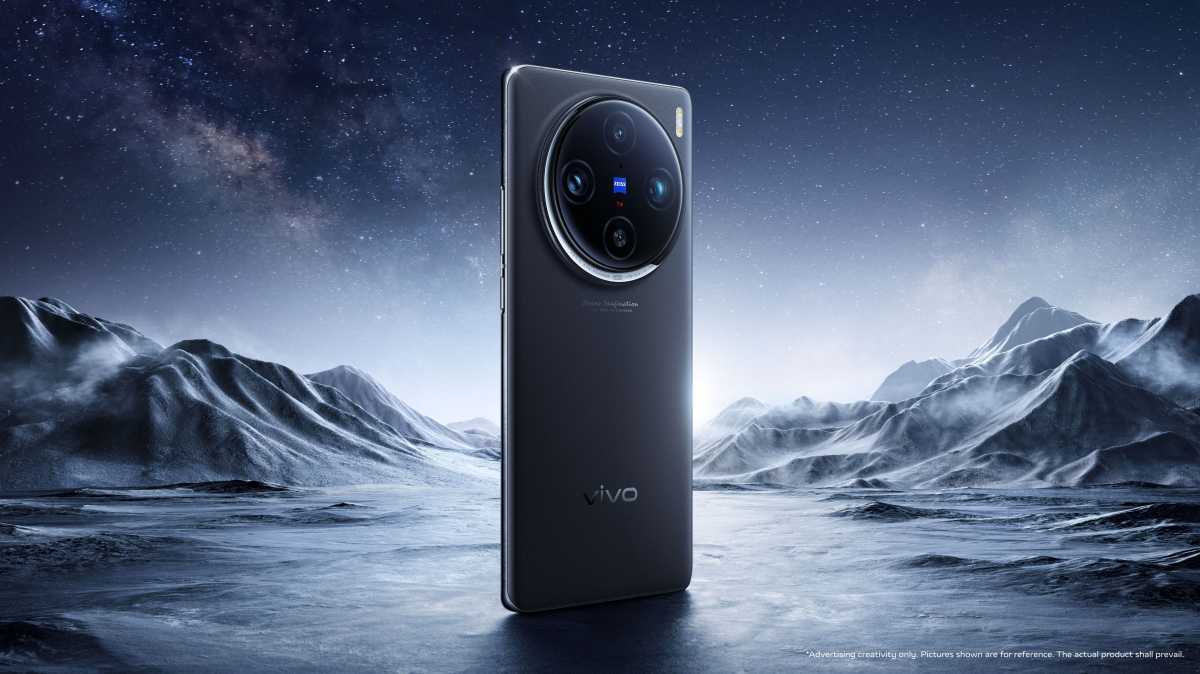We’re just days away from the end of 2023, but Vivo has a compelling late entry for the best camera phone of the year.
The Chinese company’s new X100 Pro handset has incredible camera specs, suggesting it could replace the Google Pixel 8 Pro as the finest smartphone for photos.
Each of the three rear lenses has been developed in collaboration with camera specialists Zeiss, and they all sound very exciting on paper. It’s led by a new 1-inch 50Mp (f/1.75) main sensor, which should deliver even better colour accuracy and detail than the previous X90 Pro.
That phone already had the best main lens of any smartphone, but the X100 Pro looks to be a significant upgrade. Vivo specifically talks up its portrait and low-light abilities, with the company’s own V3 chipset designed to improve image and video processing.

Vivo
There’s also a big change on the ultrawide lens, which moves from 12Mp to 50Mp but adopts the same f/2.0 focal length as before. The drop-off in image quality compared to the main lens was a key weakness of the X90 Pro, so hopefully this will improve the situation.
The third and final 50Mp lens is an f/2.5 telephoto, which now boasts 3x optical zoom instead of 2x. Vivo also wants you to use it for portraits – the larger depth of field should improve the accuracy of ‘bokeh’ background blur.
There are no changes to the 32Mp front-facing lens – but there was no need for any. It was already one of the best selfie cameras on any smartphone.
So, is this enough for the X100 Pro to become the new camera phone champ? We’ll have to wait and see. The Pixel 8 Pro’s stunning stills and AI features will be hard to beat, and it’s unlikely to deliver better video than the iPhone 15 Pro.

Dominik Tomaszewski / Foundry
But crucially, the Vivo X100 Pro’s high-end cameras haven’t come at the cost of other key features. It’s powered by MediaTek’s latest flagship Dimensity 9300 chipset, alongside 12GB of RAM and 512GB of internal storage.
There’s also a 5400mAh battery, one of the largest capacities you’ll find on any smartphone, alongside 100W fast charging. The latter is a strange step down from the 120W on the X90 Pro, but still plenty fast enough.
The 6.78-inch, 2800×1260 AMOLED display is also unchanged. That’s generally good news, although there’s still no LTPO tech, so the refresh rate can’t automatically drop down to 1Hz to conserve battery life.
But whether you actually buy this phone will likely hinge on two factors. The first is Vivo’s Funtouch OS software, which is based on Android 14 but looks and feels quite different. Bloatware and over-optimisation badly affected the X90 Pro, and it’s not clear if these have been addressed.
The other big unknowns are price and availability. We know the X100 Pro is coming to Europe (unlike the regular X100), but specific countries are yet to be revealed. A UK launch of the X90 Pro was planned but eventually cancelled.
So far, we only have a price in Hong Kong Dollars: $7,998. That translates to around £810, but it’s likely to cost significantly more than that in Europe.
Will it be even more expensive than the X90 Pro’s €1,199 price at launch? If so, it’d be a tough sell, however good those cameras end up being.




